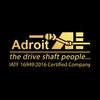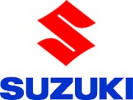Machine Operator
100+ Machine Operator Interview Questions and Answers

Asked in L.G.Balakrishnan & Bros

Q. What does a 100% quality test mean?
Quality test 100% refers to conducting tests on every product to ensure it meets the required standards.
Quality test 100% means that every product is tested to ensure it meets the required standards.
It involves conducting tests on each product in a batch or production run.
This ensures that no defective or substandard products are released to the market.
Quality test 100% helps maintain customer satisfaction and brand reputation.
Examples of quality tests include checking dimens...read more

Asked in ITC

Q. If working 8 hours a day, how many hours will you work in 7 days?
The machine operator will work for 56 hours in 7 days, assuming 8 hours of work per day.
The calculation is simply multiplying the number of days (7) by the number of hours worked per day (8).
The machine operator will work a total of 56 hours in 7 days.
This assumes a consistent 8-hour workday throughout the week.
Machine Operator Interview Questions and Answers for Freshers

Asked in Anand CY Myutec Automotive

Q. 1.difference between 4s and 2s? 2.tolerance and limit 3.Types of welding. 4.hot operation and cold operation? 5.what is thermal engineering 6.thermodynamics law 7.tolarance calculation 8.what is forging 9.machi...
read moreA machine operator interview covering topics such as welding, thermal engineering, forging, and machining processes.
4s and 2s refer to the sorting and organizing method used in workplace organization
Tolerance is the allowable deviation from a specified dimension or measurement
Types of welding include MIG, TIG, Stick, and Flux-Cored welding
Hot operation involves working with materials at high temperatures, while cold operation involves working with materials at low temperature...read more

Asked in Tenneco

Q. What is the main difference between automotive and automobile?
Automotive refers to all vehicles powered by engines, while automobile refers specifically to passenger vehicles.
Automotive includes all types of vehicles, such as trucks, buses, and motorcycles.
Automobile refers only to passenger vehicles, such as cars and SUVs.
The term automotive is more commonly used in industry and business, while automobile is more commonly used in everyday language.
Examples of automotive companies include Ford, Toyota, and General Motors.
Examples of aut...read more

Asked in Uflex

Q. What metal is a drill bit made of?
A drill bit is typically made of high-speed steel or carbide.
Drill bits are commonly made of high-speed steel (HSS) due to its durability and heat resistance.
Carbide drill bits are also popular for their hardness and ability to cut through tough materials.
Other materials used for drill bits include cobalt, titanium, and diamond coatings.
The choice of material depends on the specific application and the type of metal being drilled.

Asked in Tata Electronics

Q. What is the difference between a two-axis and a three-axis system?
A two-axis system moves in two dimensions, while a three-axis system adds movement in a third dimension for more complex tasks.
Two-axis systems typically move in X and Y directions, like a flatbed CNC machine.
Three-axis systems add Z-axis movement, allowing for vertical adjustments, like a milling machine.
Two-axis systems are simpler and often used for basic cutting or engraving tasks.
Three-axis systems are more versatile, suitable for complex shapes and 3D machining.
Machine Operator Jobs




Asked in Tata Electronics

Q. What is the meaning of CNC machine programming using M Code and G Code?
CNC programming uses G-code for motion control and M-code for machine functions, enabling precise automated machining.
G-code (Geometric code) directs the movement of the machine, e.g., G01 for linear interpolation.
M-code (Miscellaneous code) controls machine functions, e.g., M03 for spindle on in a clockwise direction.
G-code commands can specify speed, feed rate, and tool paths.
M-code commands can manage coolant flow, tool changes, and machine start/stop operations.

Asked in HLL Lifecare

Q. What is the normal operating temperature of the BRT machine?
The temperature of a BRT machine in normal work condition varies depending on the type of machine and the material being processed.
The temperature can range from 100°C to 400°C depending on the machine and material.
The temperature is usually controlled by the operator or a computerized system.
The temperature may need to be adjusted based on the desired outcome of the process.
The temperature can affect the quality and consistency of the final product.
Share interview questions and help millions of jobseekers 🌟


Asked in Baxter Pharmaceuticals

Q. Whose responsibility is it if a machine shuts down suddenly?
It is the responsibility of the machine operator to ensure the proper functioning of the machine.
The machine operator is responsible for monitoring the machine and identifying any issues that may cause it to shut down suddenly.
The operator should take immediate action to address the issue and prevent any damage to the machine or harm to personnel.
If the issue is beyond the operator's expertise, they should notify the maintenance team or supervisor for assistance.
Regular maint...read more

Asked in Prabha Engineering

Q. What role do time, temperature, pressure, speed, and position play in the machine's operation?
Time, temperature, pressure, speed, and position are critical factors that influence machine operation and product quality.
Time: Duration of processes affects efficiency; e.g., longer curing times can enhance material strength.
Temperature: Influences material properties; e.g., high temperatures can soften metals for shaping.
Pressure: Essential in processes like molding; e.g., higher pressure can improve the density of molded parts.
Speed: Affects production rate; e.g., faster ...read more

Asked in Adroit Industries India

Q. How many projects did you complete during your education?
The number of projects created in our education life varies depending on the individual's level of education and field of study.
The number of projects typically increases as we progress through different levels of education, such as elementary school, high school, college, and post-graduate studies.
Projects can range from simple assignments to complex research papers, presentations, and group projects.
In fields like engineering, science, and business, students may work on mul...read more

Asked in Sanden Vikas

Q. What steps does your company take to control rejection rates?
Steps for rejection control in a company involve identifying root causes, implementing corrective actions, and monitoring progress.
Identify root causes of rejection through analysis of data and feedback
Implement corrective actions such as training, process improvements, or equipment maintenance
Monitor progress through regular quality checks and feedback from stakeholders
Continuously improve processes to reduce rejection rates over time

Asked in BYJU'S

Q. What is the difference between confidence and overconfidence?
Confidence is belief in oneself based on experience and ability, while overconfidence is excessive belief in oneself without proper justification.
Confidence is based on realistic self-assessment and past successes.
Overconfidence involves an inflated sense of one's abilities and underestimating risks.
Confidence leads to taking calculated risks, while overconfidence can lead to reckless behavior.
Confidence is a positive trait that can inspire others, while overconfidence can be...read more

Asked in Varun Beverages

Q. Which Machine you have handled and What problem are come to machine and how to solve it
I have handled CNC machines. Problems like tool breakage or incorrect dimensions can occur. Solutions include adjusting feeds and speeds, replacing tools, or recalibrating the machine.
Handled CNC machines
Common problems include tool breakage and incorrect dimensions
Solutions include adjusting feeds and speeds, replacing tools, or recalibrating the machine

Asked in suzuki motor gujarat

Q. How many machines you operate, cnc machine codes
I operate 3 CNC machines and am proficient in G-code programming.
I operate 3 CNC machines on a daily basis
I am proficient in G-code programming
I have experience with various types of CNC machines including lathes and mills
I am able to troubleshoot and perform routine maintenance on the machines
I am familiar with safety protocols and adhere to them strictly
Asked in Suprajit Automotive

Q. What do you know about this system?
I am familiar with operating various machines in the system, including setup, maintenance, and troubleshooting.
Experienced in setting up machines for production
Skilled in operating machines efficiently
Knowledgeable in troubleshooting machine issues
Familiar with maintenance tasks to ensure machine functionality

Asked in Zydus Lifesciences

Q. What are the differences between H.S. spray guns and L.D. guns?
H.S. spray guns use high pressure for fine finishes, while L.D. guns operate at lower pressure for thicker applications.
H.S. (High-Pressure) spray guns atomize paint better, resulting in a finer finish.
L.D. (Low-Pressure) guns are ideal for thicker materials like primers and adhesives.
H.S. guns are often used in automotive painting for a smooth surface.
L.D. guns are preferred in industrial applications where material thickness is required.

Asked in AceMicromatic Group

Q. What aspects of the job are the most frustrating, and what aspects do you enjoy the most?
Enjoying time is mostly preferred over irritated time.
Enjoying time is when the work is going smoothly and the machine is operating efficiently.
Irritated time is when there are machine malfunctions or errors that need to be fixed.
Examples of enjoying time include when the machine is producing high-quality products and meeting production goals.
Examples of irritated time include when the machine is constantly breaking down or producing defective products.
As a machine operator, ...read more

Asked in Wagh Bakri Tea Group

Q. What causes production to peak?
Production peaking refers to the highest level of production achieved in a given period of time.
Production peaking is the maximum level of output achieved in a specific time frame.
It is a measure of the efficiency of the production process.
For example, if a factory produces 1000 units in a day, but on one particular day it produces 1200 units, then that day is considered to be a production peak.
Production peaking can be influenced by various factors such as the availability o...read more

Asked in Prabha Engineering

Q. How many defects typically occur in injection molding products?
Injection molding defects can vary widely, but common issues include warping, sink marks, and surface blemishes.
Warping: Occurs when the product cools unevenly, leading to distortion.
Sink Marks: Indentations on the surface caused by uneven cooling or insufficient material.
Bubbles: Air trapped in the material during injection can create visible bubbles.
Flash: Excess material that seeps out of the mold, creating unwanted edges.
Color Mismatch: Variations in color due to inconsis...read more

Asked in Prabha Engineering

Q. What are the auxiliary and non-auxiliary parts of the machine?
Auxiliary parts support machine operation, while non-auxiliary parts are essential for its primary function.
Auxiliary parts include items like coolant systems, lubrication systems, and safety guards.
Non-auxiliary parts are the main components like motors, gears, and control panels.
For example, in a lathe machine, the spindle is non-auxiliary, while the chip conveyor is auxiliary.
Auxiliary parts enhance efficiency and safety but are not critical for basic operation.

Asked in Yazaki

Q. Where did you complete your ITI certification?
I passed ITI from XYZ Institute.
I completed my ITI from XYZ Institute located in ABC city.
I have a certification in ITI from XYZ Institute.
I passed ITI with specialization in mechanical engineering from XYZ Institute.
I completed my ITI training from XYZ Institute and gained hands-on experience in operating machines.
Asked in Dynatech Tools & Devices

Q. What are the differences between CNC turning and CNC milling?
CNC turning shapes materials by rotating them, while CNC milling uses stationary tools to cut and shape materials.
CNC Turning involves rotating the workpiece against a stationary cutting tool, ideal for cylindrical parts like shafts.
CNC Milling uses a rotating cutting tool to remove material from a stationary workpiece, suitable for complex shapes like brackets.
Turning is typically used for producing parts with symmetry, while milling is better for intricate designs and flat ...read more

Asked in Raviraj Foils

Q. Do you have any experience with rolling machines?
Yes, I have experience operating rolling machines in a manufacturing setting.
Operated rolling machines to produce metal sheets of specific thickness
Performed regular maintenance and troubleshooting on rolling machines
Ensured quality control by monitoring the rolling process and adjusting settings as needed

Asked in Uflex

Q. What is the type of file
The type of file refers to the format or extension of a file that determines how it can be opened or used.
File types are identified by their file extensions, such as .txt, .docx, .jpg, etc.
Different file types require specific software or applications to open or manipulate them.
File types can be categorized into documents, images, videos, audio, executables, etc.

Asked in Tata Electronics

Q. What types of CNC machines are available?
CNC machines include various types like mills, lathes, routers, and plasma cutters, each serving specific manufacturing needs.
CNC Milling Machines: Used for cutting and shaping materials like metal and wood.
CNC Lathes: Ideal for producing cylindrical parts by rotating the workpiece against a cutting tool.
CNC Routers: Commonly used for cutting softer materials like wood, plastics, and composites.
CNC Plasma Cutters: Utilized for cutting metal sheets with high precision using pl...read more

Asked in Ognibene India

Q. How to offset cnc vmc ? How to use work offset , geometry offset and wire offset
To offset CNC VMC, use work offset for part location, geometry offset for tool compensation, and wire offset for wire EDM machines.
Work offset is used to set the part location in the machine coordinate system.
Geometry offset is used for tool compensation, adjusting the tool path based on tool dimensions.
Wire offset is used in wire EDM machines to compensate for wire diameter.
Example: G54 is a common work offset used to set the part location in CNC machines.

Asked in Ognibene India

Q. What is the cilindercity and Flatness? What is the mm or micron?
Cylindricity and flatness are measurements of how closely a surface or feature conforms to a perfect cylinder or plane.
Cylindricity measures how closely a feature's axis aligns with a perfect cylinder.
Flatness measures how closely a surface conforms to a perfect plane.
Micron (µm) is a unit of measurement equal to one millionth of a meter, commonly used for precision measurements.
Cylindricity and flatness are important in manufacturing to ensure parts meet specified tolerances...read more

Asked in Tata Electronics

Q. What is the meaning of the term "mechanical"?
The term 'mechanical' refers to processes or systems involving machinery or physical forces.
Relates to machines and their operation, e.g., mechanical engineering.
Involves physical forces, such as levers and gears, e.g., a car engine.
Can describe automated processes, e.g., robotic assembly lines.
Often contrasts with electronic or digital systems, e.g., analog clocks.

Asked in Minda Kosei Aluminum Wheel

Q. On what principle does a CNC machine work?
A CNC machine works on the principle of computer numerical control, where a computer program controls the movement of the machine.
CNC machines use a computer program to control the movement of the machine
The program is created using CAD/CAM software
The machine follows the instructions in the program to cut and shape materials
The operator inputs the program and sets up the machine for production
The machine can be programmed to produce complex shapes and designs with high preci...read more
Interview Questions of Similar Designations
Interview Experiences of Popular Companies








Reviews
Interviews
Salaries
Users

















